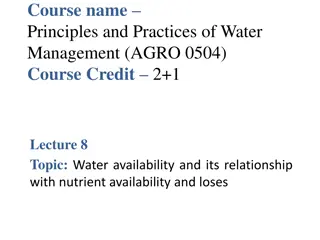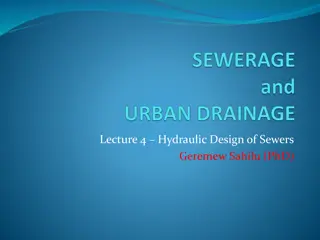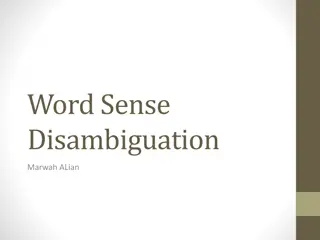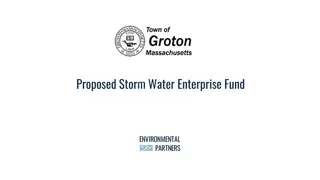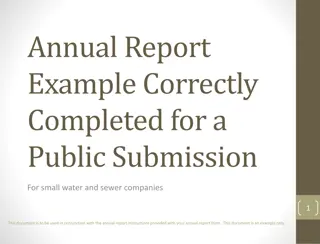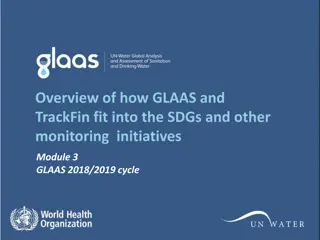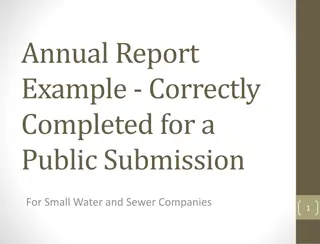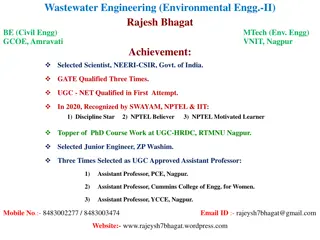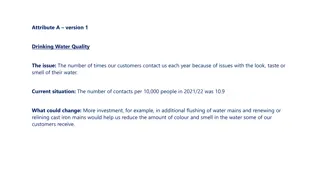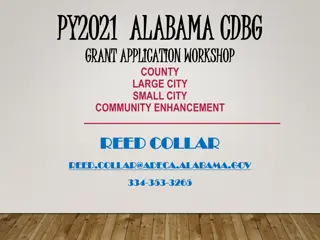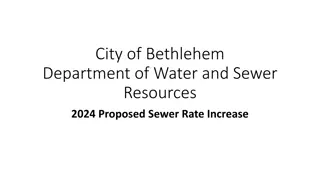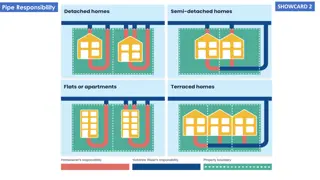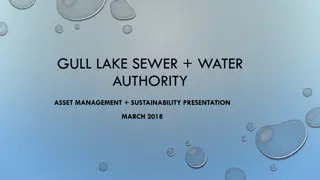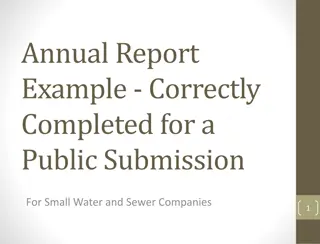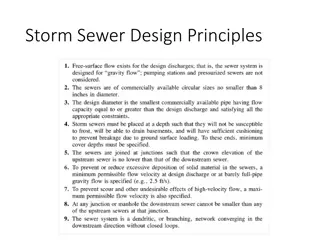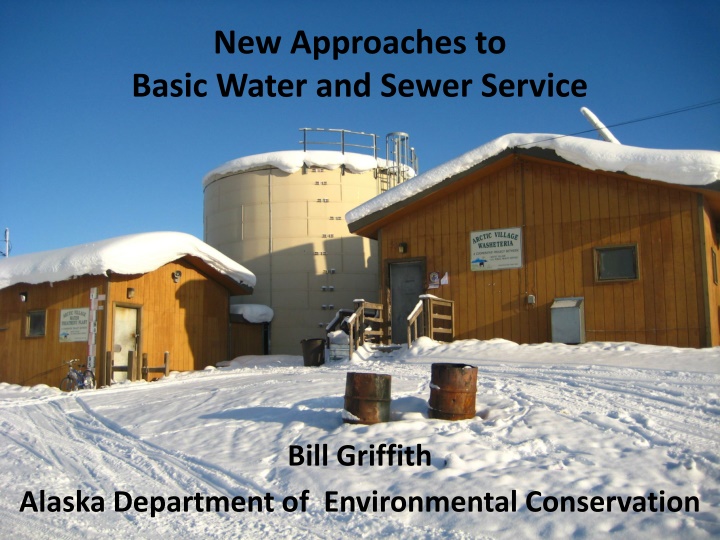
New Approaches to Basic Water and Sewer Service
The Sustainable Urbanisation Cooperation Program, co-sponsored by NSFC and JPI UE, aims to enhance urban areas' capacities for sustainable development and create knowledge for urban transitions under various conditions. This involves joint activities, major events, and specific research requirements for participating teams from China and Europe across different research areas.
Download Presentation

Please find below an Image/Link to download the presentation.
The content on the website is provided AS IS for your information and personal use only. It may not be sold, licensed, or shared on other websites without obtaining consent from the author. If you encounter any issues during the download, it is possible that the publisher has removed the file from their server.
You are allowed to download the files provided on this website for personal or commercial use, subject to the condition that they are used lawfully. All files are the property of their respective owners.
The content on the website is provided AS IS for your information and personal use only. It may not be sold, licensed, or shared on other websites without obtaining consent from the author.
E N D
Presentation Transcript
New Approaches to Basic Water and Sewer Service Bill Griffith Alaska Department of Environmental Conservation
Progress in Alaska Village Sanitation For half a century, we ve focused on putting the honey bucket in the museum (and keeping it there!) Much progress has been made: 30 years ago, fewer than 25% of rural Alaska households had running water and flush toilets. In 1996, 55% of rural homes had piped or covered haul service. Today, approximately 75% of rural homes have indoor plumbing (over 90% if regional hubs are included in the calculation).
Centralized Approach Since 1970: 100% water treatment to full regulatory compliance (regardless of ultimate use) Storage of large quantities of water, usually requiring heat addition Distribution of treated water to individual homes via pipes or haul vehicle, usually requiring heat addition Collection of all household sewage for lagoon disposal, usually requiring heat addition
Categories of Project Needs January 2013 Upgrades to benefit system operation or to address minor health threats: $199,527,908 Upgrades or replacements to address substantial health threats: $410,015,442 First time service for homes without piped or covered haul water and sewer: $292,682,161
Project Funding from All Sources 2004 - 2013 $120,000,000 $100,000,000 $80,000,000 $60,000,000 $40,000,000 $20,000,000 $0 04 05 06 07 08 09 10 11 12 13* State EPA/VSW USDA-RD IHS EPA Tribal ARRA
The Growing Gap Between Critical Needs and Available Funding $800,000,000 $700,000,000 $600,000,000 Estimated cost of project needs $500,000,000 $400,000,000 $638 million $300,000,000 $316 million $200,000,000 Total funding from all sources $100,000,000 $0 2006 2007 2008 2009 2010 2011 2012 2013
Water and Sewer User Fees as a Percentage of Median Houshold Income 8% 7% 6% EPA Recommended Sustainability Threshold 5% 4% 3% 2% - - - - - - - - Lower 48 Average 1% 0% Lower Kalskag Deering Selawik Brevig Mission Nulato Grayling Goodnews Juneau Anchorage Sitka Palmer Bay
Bottom Line: Conventional, community-wide piped systems and truck haul systems are expensive to construct, maintain and replace. Many communities cannot afford the high operation and maintenance costs associated with piped or haul systems. Available funding is not adequate to serve remaining homes and make needed improvements. Innovative approaches are needed in order to address health problems associated with water and sewer system deficiencies.
New Approaches to Basic Water and Sewer Service A state-funded research and development project Projected to last 5 7 years Current year funding is $1 million Funding requested for next year is $3 million Focus is on decentralized approaches household based systems that utilize water re-use technologies Goal is to significantly reduce the capital and operating costs of in-home running water and sewer in rural Alaska homes.
Project Plan: Phase I, Spring 2013 Formation of Joint Venture Teams DEC will advertise and request the formation of joint ventures, comprised of members with specific expertise. A three-month long international solicitation for Statements of Qualifications will occur in early 2013. Engineering companies, research institutions, manufacturers, and others will be encouraged to form partnerships in responding to the solicitation. The top five to eight teams will be funded for development of proposals that will meet specific performance criteria.
Project Plan: Phase II, late 2013 Proposal Development Project teams will spend six months to develop proposals that will meet performance criteria Project teams will present their detailed proposals to the project Steering Committee. The most promising proposals (up to three) will be selected to receive additional funding for further development and pilot testing in a laboratory setting.
Project Plan: Phase III, 2014 Prototype Development & Pilot Testing Up to three proposals will be funded for prototype development and pilot testing in a laboratory setting. Engineering plans of each prototype will be reviewed and approved and testing requirements will be provided. In late 2014 the results of the pilot testing phase will be presented to the Steering Committee. Systems that demonstrate promising results will be selected for the next phase of development.
Project Plan: Phase IV, 2015 Field System Development and Testing Additional funding will be provided for to develop a field testing package that can be installed in rural Alaska homes. Engineering plans will be reviewed and approved and testing requirements will be provided. Field testing will include a full year of operation. During this phase, systems will be closely monitored and users will provide feedback on operation and use. Systems that can demonstrate sustainable, durable improvements will be refined and further deployed using available funding sources.
Project Plan: Phase V, 2016 - ? Refinement and Improvement Additional funding may be used to address inadequacies or failures identified during Phase IV field testing and to improve durability of the systems. Field testing may be expanded to additional homes or locations.
Discovery consists of seeing what everybody has seen and thinking what nobody has thought. Albert Szent-Gyorgyi Hungarian physiologist who won the Nobel Prize in Medicine in 1937,credited with discovering vitamin C.


